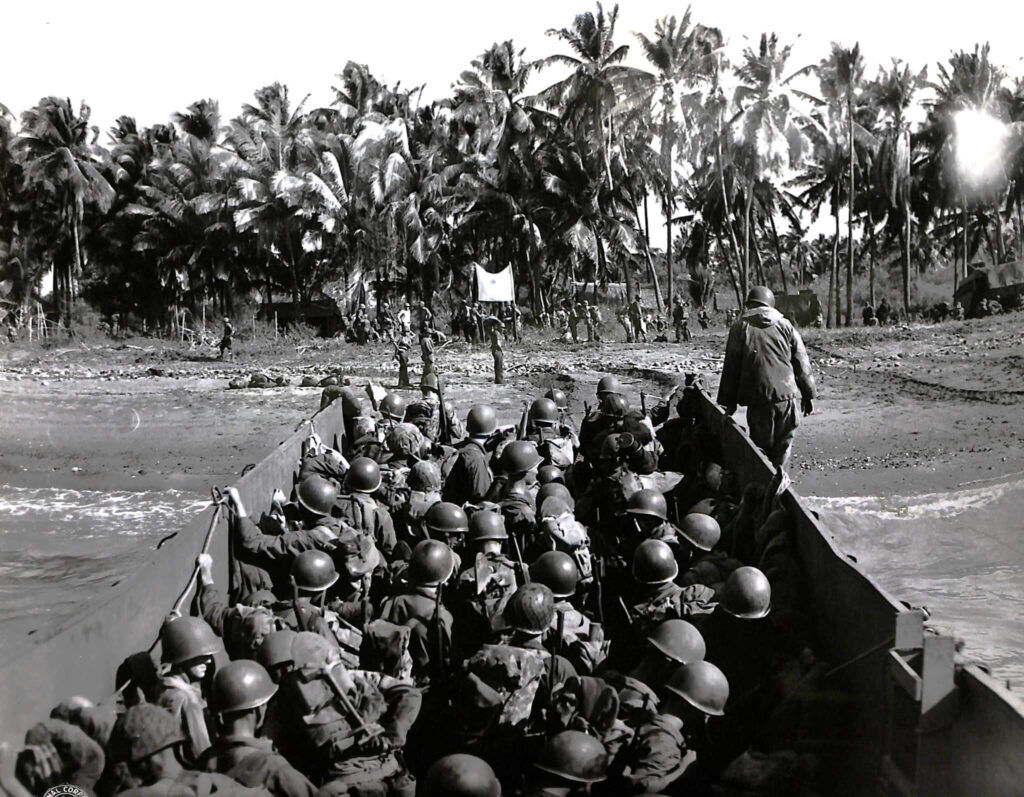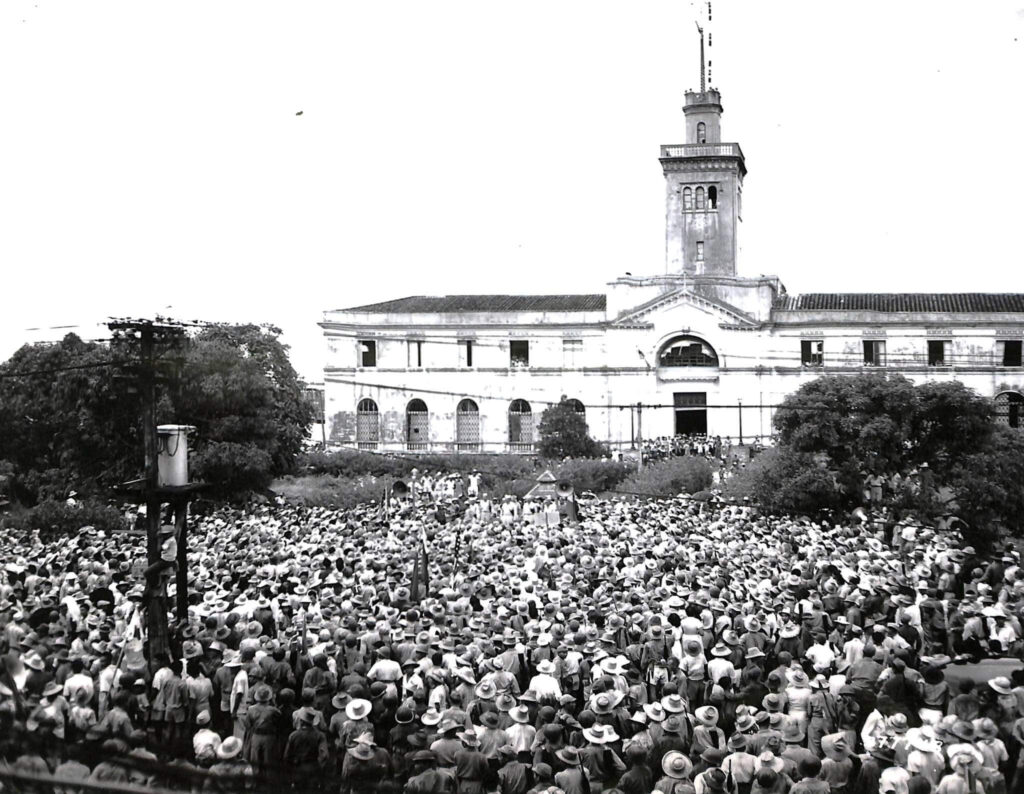A Crash Course on the War in Panay
Article by Prof. Rey Carlo T. Gonzales, University of the Philippines Visayas

When Panay was preparing for the eventuality of a war, it was met with many challenges. Five regiments of the Sixth Military District were being organized, but only two were combat ready. These two more well-prepared regiments were sent to defend Mindanao, while the other three were still being consolidated as the Japanese arrived. There was also little to come by in terms of military hardware; A few antiquated mountain guns which would have served as the 6MD artillery, sank to the bottom of Manila Bay when the ship SS Corregidor that was transporting them accidentally hit a water mine. There were logistics and supply issues that still needed to be addressed, and the vast majority of the men being assembled had no combat experience, let alone ever fired a weapon.
The War came to Panay on 18 December 1941, several days after the attack on Pearl Harbour. Iloilo City was bombed by the Japanese, with Fort San Pedro, the Lapuz fuel silos, and the Iloilo-Negros Air Express Corporation runway and hangar as key targets. The Japanese landing forces would not arrive until April of the following year, shortly after the Japanese finally secured Bataan. Prior to the Japanese landing, the USAFFE realized the difficulty of adequately defending such a wide front, and thus adopted a scorched earth policy to deny the enemy of vital resources, infrastructure, and facilities. In the course of the war, much of the destruction on the island would be caused either by this scorched earth policy, or by bombardment and bombing from the American liberation forces in 1945.
The Japanese landed on 16 April 1942 at three key points on the island—in Capiz, Antique, and Iloilo. The major thrust was directed at Trapiche, Oton, which intended to drive a hammer into the heart of the island’s capital at Iloilo City. The USAFFE response was admirable—with their effective employment of the falling line tactics. This strategy maximized damage to the enemy while minimizing their own losses. The enemy pushed hard, however, and shoved the Panay defenders into their last line of defense at a mountain in Calinog. Here, at the Battle of Dila-Dila, the line was held firmly by then-Captain Julian Chavez. The battle see-sawed—the Japanese momentum was losing steam, but the Panay defenders were also standing on their last legs. If the USAFFE defense here collapsed, HQ would be overrun. Fortunately, the men under Chavez did not falter, and the Japanese were the first to withdraw, effectively saving the entire division from being thrashed.
In May of that year, the defenders of Corregidor surrendered, and by default necessitated the surrender of all other allied forces in the country. While the American soldiers were compelled to surrender, the most senior Filipino captain by the name of Macario P. Peralta Jr. retorted that he would “rather be court martialed after the war than be made to surrender to the invaders.” The Americans decided to transfer the remaining division funds of some P83,000 to his care. The Americans surrendered, while the Filipino defenders of Panay dispersed in order to consolidate at a later time.
The senior Filipino officers later met to study the feasibility of waging asymmetric warfare against the Japanese. The main question was how long they could sustain guerrilla warfare against the enemy. Peralta turned to his supply officer then-captain Francisco Offemaria, who calculated that they had enough supply to last ten years’ worth of resistance. The Filipino USAFFE soldiers reassembled, and this time, they emerged as the Free Panay Forces, better known to us as the Panay Guerrillas.
In late 1942, with some ingenuity, one of the soldiers, a UP Chemistry student, was able to distill fuel from coconut wine. As such, coconut wine was now a war commodity, and its drinking was outlawed, much to the dismay of the locals. And yet, this humble drink saved the Panay Guerrillas because the fuel distilled from it was used to power the radio equipment which was able to establish a comm. link to Douglas MacArthur in Australia. The radio contact allowed the Panay defenders to organize submarine rendezvous with the US navy, and supplies and equipment started pouring into the island.
By 1943, now emboldened, the Panay Guerrillas began to mount offensives against the Japanese, with one ambuscade at Janiuay nearly killing the highest ranking Japanese soldier in the Philippine Islands, Lt. Gen. Shizuichi Tanaka, who served as the Philippine military governor-general. The Japanese response was swift and brutal—three stages of punitive campaigns that saw the horror stories of Japanese atrocities against civilians our grandparents were telling us about. This was known as the juez de cuchillo. As an attempt to control the situation and give the Japanese the idea that this punitive tactic was fruitful, MacArthur ordered the Panay guerrillas to lie low and wait. A relative calm settled over the island, and conflict would only resume after American forces triumphed at history’s largest naval battle at Leyte Gulf in late 1944.
By the start of 1945, the Panay Guerrillas were now poised to be the other half of a pincer (the other being the US 40th Infantry “Sunburst” Division) that would clamp down on the Japanese on the island of Panay. From February to March, the Panay Guerrillas cordoned off the Japanese forces at Iloilo City, in an attempt to prevent them from reconsolidating and mounting a sizeable defense in the mountains of the island. This was known as the Battle of Balantang. A contingent of retreating Japanese forces were able to break out of the cordon on the early morning of March 18th, trampling over an entire company of Panay Guerrillas—the largest loss of life among the Free Panay Forces during the war. That gap was reinforced, however, and a second Japanese attempt on the 19th was repelled. It should be said that unlike Manila, Iloilo was saved from destruction because the Japanese refused to hole up in the city.
By the time the Americans landed on March 18th, they were not met by gunfire, but by throngs of civilians greeting them with smiles and cheers. Much of the fighting had already been done by the Panay Guerrillas, and only some stragglers and Japanese rearguard action remained. Peralta was awarded the Distinguished Service medal in front of the Sinamay house in Villa, and Iloilo City was completely liberated by the 20th. On the 20th, the Panay Guerrillas marched into the island’s capital after three years of bitter fighting—their lines reduced, their uniforms torn, with some of them even walking barefoot. Yet in doing so, they became one of the very few military units that marched into their own city which they liberated.
In closing, there are several key lessons I would like to raise about the war in Panay:
1. We did not stand alone – the 6MD had the support of civilians, and received equipment and later on, fire support from the Americans
2. Heroism had several faces – not counting the American and Japanese experiences, there were essentially three Filipino stories that were unfolding during the war in Panay:
a. The story of the Panay Guerrillas under Peralta, the military arm of the island;
b. The story of the Commonwealth Government in hiding under Tomas Confesor; and
c. The story of the Japanese-sponsored government under Fermin Caram
There was therefore no one type of heroism. Heroism had many faces. The 6MD was just one of them.
3. The defense and liberation of the island was done by reservists. During the Commonwealth, the entire country only had 20,000 soldiers. By the start of the war, the bulk of USAFFE soldiers, including those who defended Bataan and Corregidor, were reservists—graduates of the ROTC. In some bizarre twist, the US 40thID which landed in Panay was a National Guard unit—they too were reservists. Speaking as a reservist, I stress that historically, reservists were a critical part of the equation, and a valuable part of the solution.
There are many parallels that can be seen in the prelude for WW2 and what is going in the world now, particularly with our experiences of Chinese aggression. As the AFP begins its pivot towards territorial defense, with the goal of attaining an effective and reliable defense posture, I firmly believe that we can learn a lot from the history of WW2 in Panay in that respect. If any, the war has shown us the problems we can expect to encounter and the solutions we might apply. To cap it all off, there is also that simple realization that the country will never run out of people who have the heart to serve, suffer, stay behind, survive, surpass, and succeed. May the next generation of defenders learn from our forbearers, rise up to whatever challenge comes our way, and live up to the example of what we now regard as the ‘greatest generation’ of our time.

ARCHIVE: